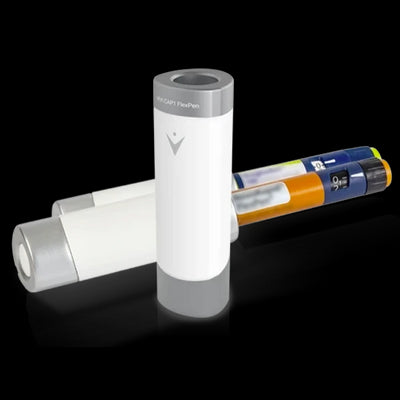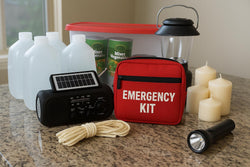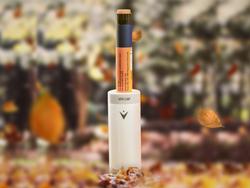Tempramed Blog
What Happens if Insulin Gets Warm?

Dreading Summer Fun Because of Diabetes? There’s A Solution
It’s a nightmare scenario for anyone with diabetes — you’re out on a fun hike with friends, the sun is high, and you’re all having a great time, when suddenly you experience a crash. You reach for your insulin pen, but the sun and the heat have already degraded the medication inside, leaving you with a product that is just not up to getting the job done. In worst case scenarios, this can lead to overdosing or even hospitalization. In even the best of scenarios, you are left with limited glucose levels.
Finding the safest and easiest storage solutions has always been essential for people with diabetes. But when you’re out in the great outdoors, swimming, or going to the gym, traditional storage solutions have not always been the easiest answer. Modern technology, however, finally has an answer and one that’s compact, safe, and user-friendly.
Not Too Hot, Not Too Cold
Temperature is the most important issue when it comes to keeping insulin viable. Both heat and cold can affect the medication, which is a protein, causing it to degrade and lose its potency. In general, insulin should never freeze and should never get hotter than 86 degrees. Ideally, insulin should always be stored in a ‘goldilocks’ temperature range— not too cold, not too hot— that runs from 36 to 46 degrees. (check F)


What happens once insulin has gone bad
When insulin gets exposed to temperatures that are either too cold or too hot, it breaks down and no longer has the same strength or efficacy. What this means is that while it may still deliver some therapeutic relief, it will not work to the degree expected. As a result, people with diabetes will not be getting the dosage they expect, leading to higher blood sugars in acute scenarios and over time. Patients may increase dosages, as a result, and in some cases, require hospitalization for stabilization.
According to Maria Fernandez de Fiore, RN, a diabetes care and education specialist and Inpatient Diabetes Program Coordinator for Riverside University Health System in Moreno Valley, California, once insulin has gone bad, it “won’t be effective to manage blood glucose levels anymore.” In critical care situations, even the smallest reduction on efficacy can lead to disastrous results.
Storage Solutions of the Past

Historically, those with diabetes have turned to a range of storage solutions designed to keep their insulin at ideal temperatures, including insulin coolers, fridge totes and batteries. While effective to a degree, these storage solutions came with several pain points, not the least of which was their size, which made them difficult to tote with ease.
These storage devices and insulin coolers also didn’t work consistently or well in the long term, putting the essential medication stored inside at risk. They can also, frankly, leave a big mess, thanks to melting ice and leaks. Finally, they aren’t the most discrete options, signaling a private, medical issue to any and everyone.
VIVI Cap – A Compact and Proven Solution
Today, more and more people with diabetes are turning to an innovative insulin storage solution that is easy to use, easy to carry, and keeps insulin in ideal condition— VIVICAP1. This insulin storage device solves the problems associated with older storage solutions, including size and the potential for failure. It serves as a mini-fridge, of sorts, keeping insulin that is in use at a safe temperature when it gets hot outside.

The VIVI Cap features a compact and sturdy design that fits right onto an insulin pen, making it small enough to slip into a pocket or purse. Scientifically proven, FDA registered and CE marked, this storage solution also works for years with no maintenance. A built-in temperature sensor and indicator monitor temps so that users always know the status of their medication. The design also works with pre-filled and refillable pens, making it a flexible solution that can fit into the lifestyles of a wide range of patients.
Patients across the board are raving. An excerpt from just one review says it all:
“This is an amazing product. My dad recently went on vacation in Cancun, and this pen was a lifesaver. It kept his insulin safe and cool, even during the day trips in +90F temperatures.
It’s easy to carry and gives you peace of mind on the top of being very user-friendly and effective.
We are very happy with this product, and would definitely recommend it to any insulin-dependent person.”
How VIVCAP1 Works
The VIVI Cap design is simple and effective. Once an insulin pen has been opened, the VIVI Cap fits right onto the tip of the pen, thanks to its Click-n-Go design. This insulin pen case then acts as an insulator for the medication through a patented combination of insulation, heat exchanger, and electronics, keeping it well within the temperature safety zone for use.
The VIVI Cap has been scientifically proven to keep your insulin cool below 84.2°F (29°C) for a minimum of 12 hours even in environments that get as hot as 100°F (37.8°C). The innovative design also regains its capacity to cool automatically whenever the environment’s ambient temperature gets below 78.8°F (26°C ). Users can enjoy these advantages for years, without the need to maintain the insulin pen case
VIVI Cap stands up to cold, as well. Even in temps as low as -4°F (-20°C) the thermal insulation in the device prevents insulin from freezing. Checking the temperature of the stored insulin is easy, too— just press the button on the end of the pen. After a few seconds, a green indicator light will go off, indicating that the medication is still at an ideal temperature.
Get Your VIVI today
VIVI Cap works, providing people with diabetes with a safe and reliable to tote and store their insulin on warm and hot days. If you are managing your own diabetes and need to take insulin on a regular basis, this insulin travel case may well be the high-performance, on-the-go storage solution you need. Visit tempramed.com to purchase your own VIVI Cap diabetic travel case today.






